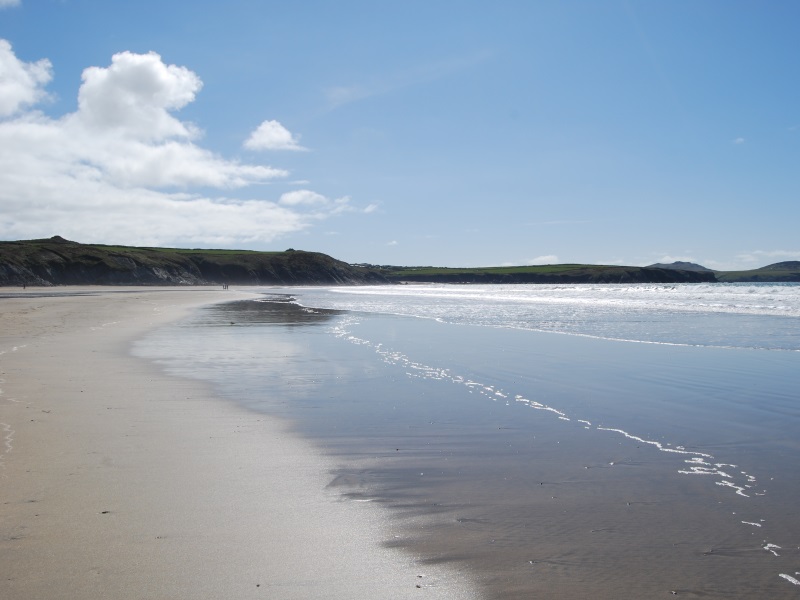Whitesands beach, St Davids, Wales
Visit Whitesands beach, one of my favourite beaches, with its mile long golden, sandy beach, European Blue Flag, ideal for bathing, surfing, canoeing.
Here stroll along the golden, sandy Whitesands beach.
It holds a European Blue Flag status.
Situated on the St Davids Peninsula in the Pembrokeshire Coast National Park, Wales, United Kingdom. The beach is about two miles west of the small city of St. Davids and about a mile south of St Davids Head.
One of the best surfing beaches in Pembrokeshire.
Facilities
Toilets are available including facilities for the disabled – sadly there is a charge of 20p
In summer months, lifeguards patrol the beach
Cafe and shop are near to the beach with delicious coffee and cakes
On the beach there is a slip way and a first aid post
Activities
Bathing
Swimming
Surfing
Windsurfing and canoeing
Available to hire- surfboards, wet suits, beach chairs
Carn Llidi, a large rocky outcrop, is north east of the bay, 594 feet (181 m) at its highest point. Wonderful to go climbing up to the top, some fantastic photos have been taken from here.
Whilst walking the Pembrokeshire Coast Path you walk alongside the bay, lovely cafe to stop and have food and drink.
Walking on the coast path gives access in the north to the secluded bays of Porthlleuog and Porthmelgan (which are only accessible on foot), and the rugged coastal scenery of St Davids Head. Megalithic burial chambers, stone hut circles and British Iron Age field systems and enclosures to be seen in the vicinity of Carn Llidi and St Davids Head.
To the south, the coastal path leads to Porthselau and St. Justinian, the lifeboat station with views across the Ramsey Sound to Ramsey Island from Treginnis Headland.
St Patrick’s Chapel
100 metres to the west of Whitesands car park, adjacent to the coast path, is the site of St Patricks chapel.
St Patrick had his vision to convert Ireland to Christianity here and set sail from the bay in the fifth century.
I was very fortunate to be involved in the dig again this year to uncover cist graves http://www.dyfedarchaeology.org.uk/digdiaries2016/stpatricks2016.html Check out to see the discoveries.
Daily, lots of visitors viewed the dig and talks were given.
At very low tides the remains of an ancient, submerged forest can be seen on the beach, consisting of stumps of birch, fir, hazel and oak trees.
The remains of animals have been found in these deposits including parts of an aurochs, a red deer antler and a brown bear jaw.
I saw a submerged boat outline during one of these low tides.
